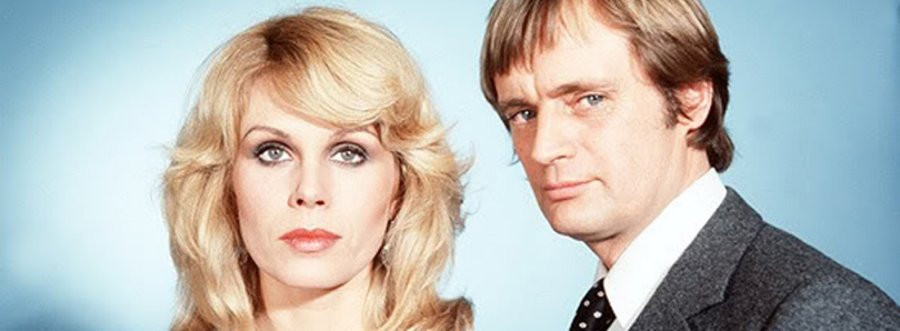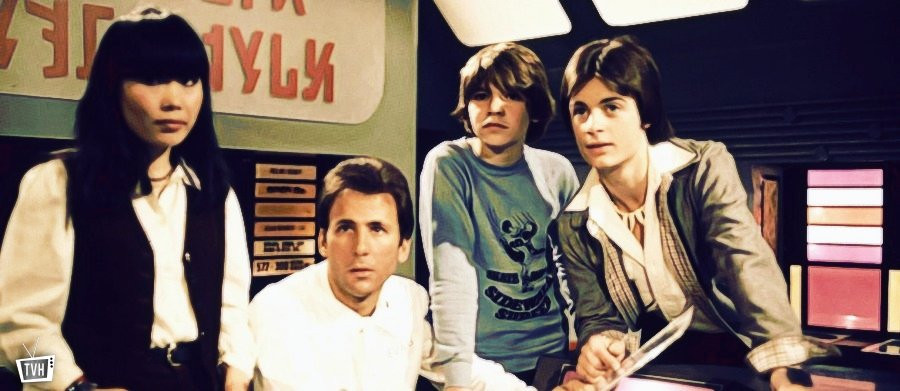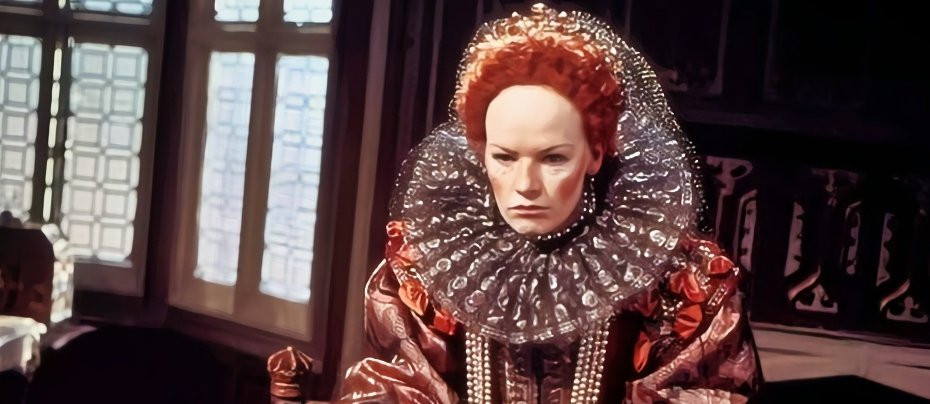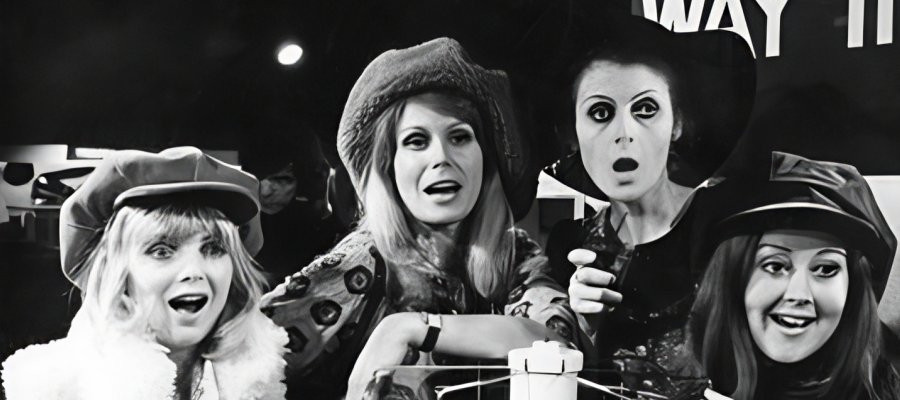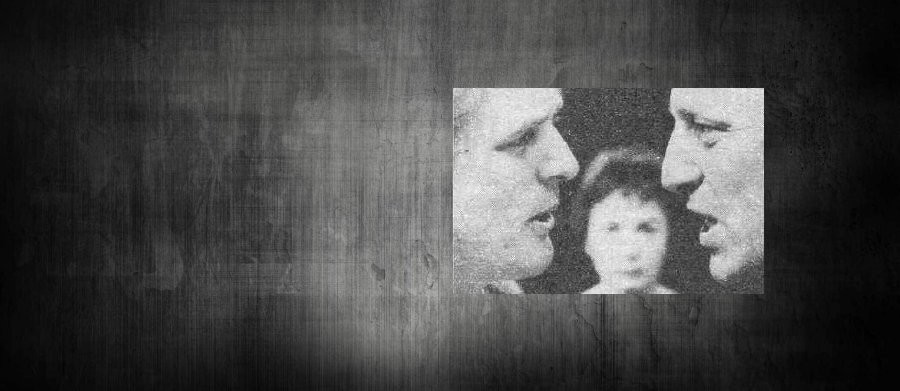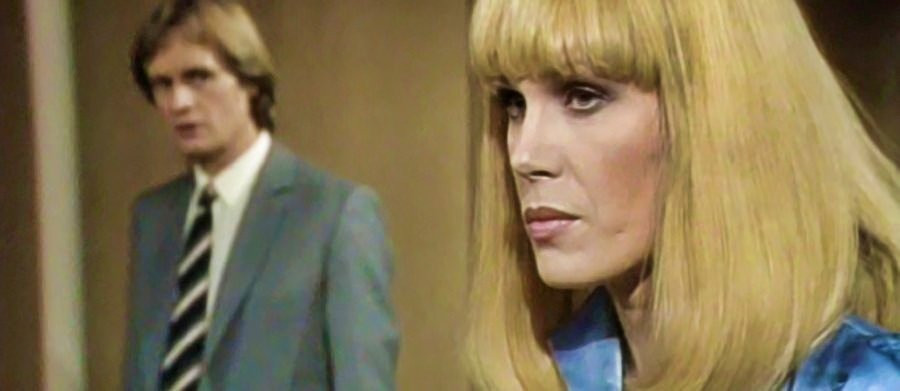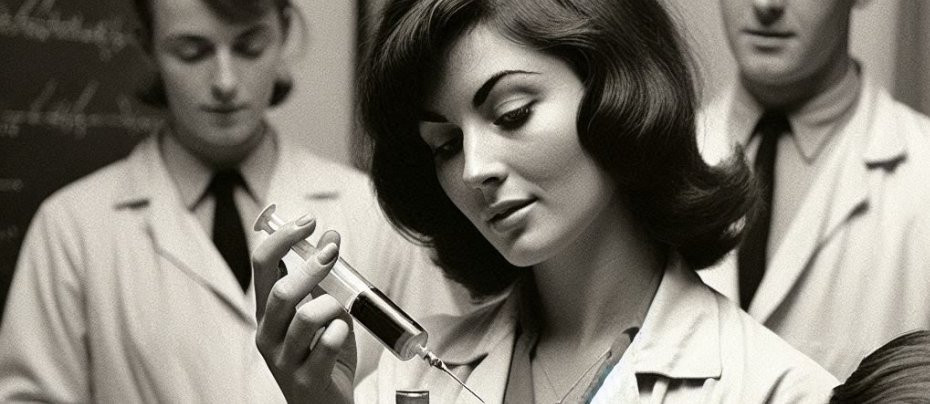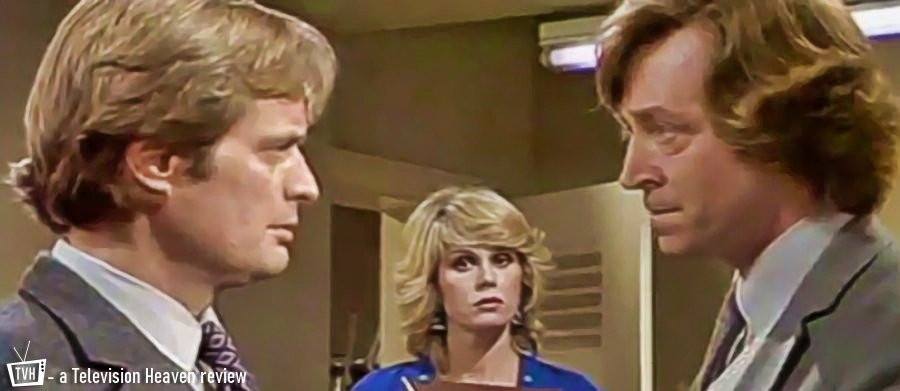
Sapphire & Steel - Assignment Six
The final serial of Sapphire & Steel was kept back from the schedules for some months following a major reshuffle at ITV. The production company ATV, which had produced the series, lost its broadcasting franchise with ITV as it reassessed its regional structure in 1981. The newly formed Central Television took over their franchise for 1982, but there was a large backlog of ATV programming still knocking around, un-transmitted. Central wasn't particularly keen on transmitting material produced by their predecessors, but television production is often a hair's breadth away from falling behind schedule and will often fill the slots with whatever is available, and the final Sapphire & Steel was broadcast by Central on ITV in August 1982, very nearly a year after the previous serial.
As with all but the fifth story, Assignment Six is written by series creator P. J. Hammond. The serial is marked out by having a subtly different title sequence, with the music in a lower key and, for some reason, the list of elements altered – our old friend Lead is replaced by Mercury. The suggestion might be that this was an attempt at a relaunch, perhaps with the intention of introducing Mercury somewhere along the line, but these intentions came to nothing. While Hammond had some rough plans for further serials, this was to be the last, and it makes a fitting and effective finale. At only four episodes long, the serial moves along fairly briskly, with each episode revealing something new and pushing the mystery along further.
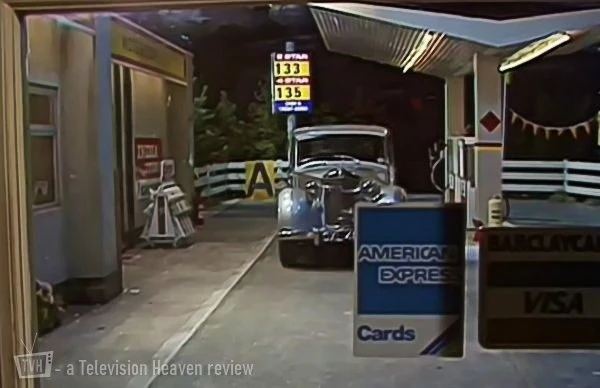
The serial opens in a roadside café at a petrol station, an innocuous enough location for the agents' most dangerous assignment. Inside, the clocks have stopped, with time apparently stuck at 8.45 pm. The only people there are a couple who claim to be from 1948, but seem remarkably unphased when the agents inform them that it's actually 1980. Sapphire and Steel are further perplexed when Silver shows up (once again played by David Collings, wearing a lovely silvery waistcoat beneath his business suit). Unlike most assignments, when the investigators will call on the services of a specialist or technician, this time Silver is already fully aware of the situation and has already begun investigating himself. Events become more peculiar still when a third time-zone begins to intrude on the café, with a ghostly old man materialising and insisting that it's 1925.
The people trapped within the café are, from the outset, almost as odd as the agents. Never receiving names, the couple are apparently involved in an illicit affair and were on the run when they stopped at the café in 1948, complete with their ration books. Neither one seems interested in eating, though, and both are coldly content to sit together and quite hostile to the agents' questions. The man is played by Edward de Souza, something of a minor star in the 1960s and '70s, recognisable for many guest roles in series such as The Avengers, The Saint and The Troubelshooters, and leading the cast in the lost Doctor Who episode "Mission to the Unknown." The woman is played by Johanna Kirby, then recently seen in Maybury. Both seem to be aiming for the same emotionless, untouchable style as the agents themselves, but that style of performance takes a certain amount of charisma and the guest actors don't quite pull it off. De Souza is by far the better of the two, displaying more character and grit as the serial progresses. Kirby, though, is a weak link, even in later episodes where she keeps the viewer (and the agents) guessing as to her real allegiances.
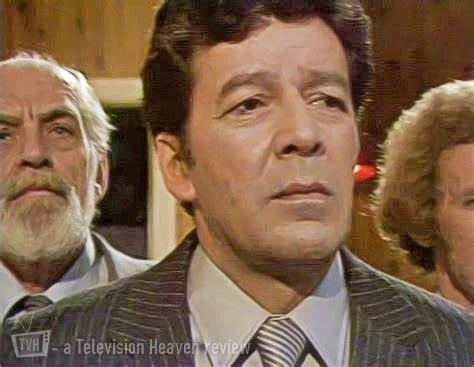
John Boswall plays the old gent from the past. In 1982 he was shortly to appear as Sir Charles Baskerville opposite Tom Baker's Sherlock Holmes for the BBC, better recognised now for a prominent role in the 2005 series Rome and a spooky appearance in the second of the Pirates of the Caribbean films. He's suitably creepy, although he doesn't get a great deal to in the story. Most effective of the guest cast though is Christopher Fairbank, whose surprise appearance ends episode two. Playing Johnny Jack, a creepy-as-hell mummer or travelling performer, claiming to be separated from his troupe and believing the year to be 1957. Jack's tatty clothing, grubby clown-face make-up and overfamiliar attitude make him an unsettling presence in the already tense environment. Fairbank is best known today as Moxey on Auf Wiedersehen, Pet, but with plenty of genre work under his belt including Alien 3, The Fifth Element and the revived Doctor Who. His arresting performance is a highlight of this story.
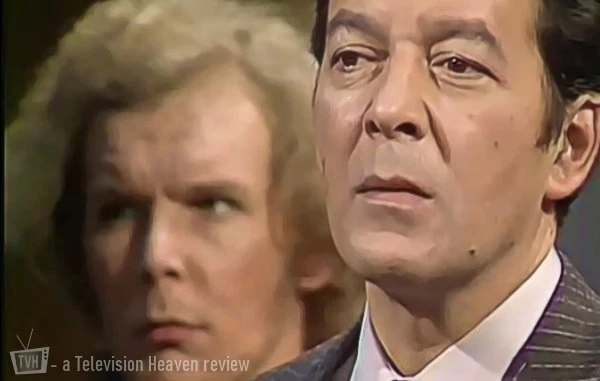
The atmosphere at the café becomes increasingly tense as events progress. Time skips forward in uneven jumps, while the presence of people from different social backgrounds and time periods makes things uncomfortable. How they've reached the café is uncertain, and how they can leave even more so. Silver's abilities are explored further when he is able to produce perfect duplicates of mechanisms, up to the couple's vintage car, but still they are unable to escape. The irrational nature of the problem leads the agents to conclude they're not on a case but in a trap.
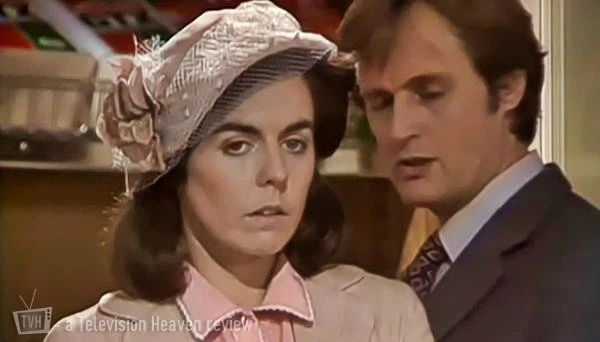
The third episode ends on a simple but powerful cliffhanger as something of the truth is revealed. The three men (with the nature of the woman ambiguous right up to the end) is revealed – after a fashion. Sapphire's deduces that they're like them, or almost. "I think they work for a higher power," she says, a simple line but one with frightening implications. Remember that throughout the series we'd never got anything but the faintest of hints about what the agents are, nor who or what they work for, only that they are extremely powerful and seemingly vital to keeping time from collapsing. The idea of a power that they answer to is unsettling enough, but the idea that there might be something even beyond that, and apparently malevolent, is more chilling still.
When the truth is revealed, the men manifest in forms more reminiscent of the agents. Their eyes glow like Sapphire's, but in a deadly red rather than blue, and they wear the same sombre style of business wear as Steel. Whatever their true forms are, it almost seems like they're mocking the agents. Steel calls them "transient beings," but this tells us little, and states, intriguingly, that they should be "trapped in the past where they belong." Some fans have linked these beings to the transuranic elements mentioned in the title sequence, but while that's a possibility there's no such link made here. Sapphire and Steel speculate as to their reasons for doing things, wondering if they're perhaps rivals jealous of their success. Alternatively, we could wonder if they're the agents of one of the entities defeated by the agents in the past – perhaps even deadly agents of time itself. We have just as little to go on when it comes to these villains as we do for the heroes.
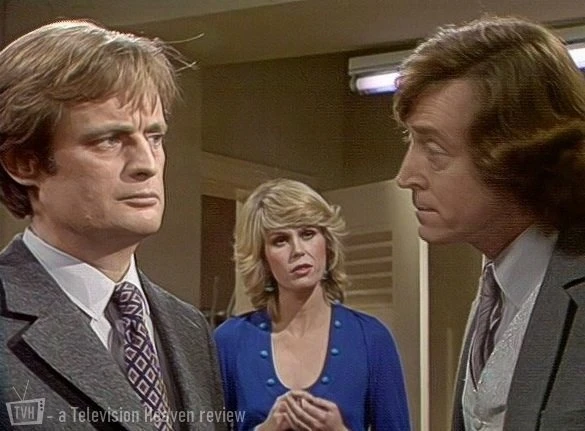
De Souza's character is armed with a harmless looking box, which contains some kind of time warp that can cast its victims back 200 million years (to the Triassic Period, as Silver helpfully reminds us). Fortunately, Silver's ability to create copies works on this, and he's able to dispatch both Jack and the old man with ease. Or so it seems... the agents' escape attempt fails, and Sapphire and Steel find themselves back in the café, back at the time and place it started. Silver has vanished, and this, along with the transient beings' offer to let him go if he left Sapphire and Steel to them, combined with his unexplained involvement in the assignment, makes it look very much like he was in on it from the start.
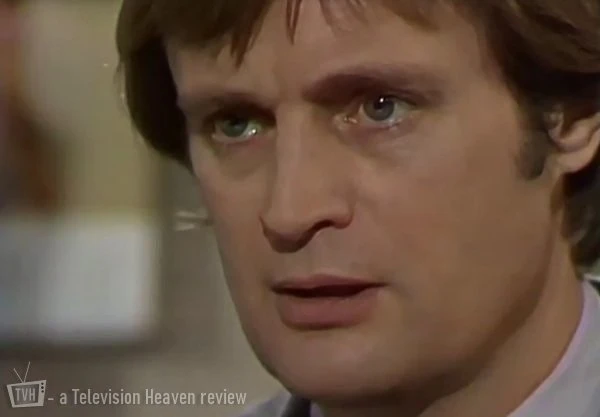
The rare occasions we see the usually unflappable Steel unsettled are always a chill, but here, deposited back in the café, he seems utterly bewildered. It doesn't take him too long to regain his wits, but the man and the woman reveal that the box was irrelevant. The café was the trap all along. They happily vanish, leaving the two agents trapped in one room. Outside is nothing but stars. The final image is of our two heroes staring out of a window, impossibly and forlornly drifting in deep space.

If this seems overly spoilery for an overview, it's because this final, haunting image is the defining moment of the serial. Without the agents' defeat, Assignment Six would be a diverting but not particularly inventive story that would probably have ranked in the bottom half of the series in fan opinions. It's for this devastating and still unresolved cliffhanger that the serial is so well-remembered, a remarkable and powerful final image that sticks in the mind long after the serial has ended. It's a brave move, leaving the series' protagonists so utterly defeated, with just the slimmest hope that there might be a way out and a return for the series.

Hammond wrote two versions of the final episode, one of which would have resolved the story more fully but made it easier to follow up with more episodes. This version had Silver trapped in the café with Sapphire and Steel, and he would have created a gizmo to help break them out. It seems clear that by the time it went before cameras, there was little chance of any further episodes, and so the more ambiguous ending was filmed instead. When it was finally aired, months later, the likelihood of more episodes was slimmer still, particularly as ATV was no longer in a position to be making it and Central was unlikely to relaunch its rival's series. That was it for Sapphire & Steel – six serials and done.
There have been several rumours over the years that Sapphire & Steel will return to television in a rebooted and recast form, and Hammond has spoken about the possibility on occasion. While the writer has been approached to revive the series or sell the rights, none of these initiatives have ever gotten past the early stages, with Hammond citing that modern TV executives don't seem to quite get the series. He has pointed out that these parties often "felt it was important to say where our heroes came from and how they got their powers. But from the very beginning I had no idea where Sapphire and Steel came from, and I still don't know." Indeed, the unending air of mystery around the agents is a huge part of their appeal, and while fans have their theories, not knowing is all part of the fun.
Away from television, though, there has been a successful revival by Big Finish, a company that specialises in audioplays of classic television programmes. While they're most associated with Doctor Who and its spin-offs, Big Finish have produced audio remakes and continuations of a multitude of beloved properties, and from 2005 to 2008 the company released three series of audios continuing the series. While they're set after Assignment Six, the writers wisely skirt around the subject of how the agents escaped their predicament. Although both Lumley and McCallum were approached to reprise their roles, they ultimately declined. Steel was initially played by the prolific screen and voice actor David Warner (famous for The Omen, Time Bandits and much more) Sapphire was played by Susannah Harker (known for the 1990 versions of House of Cards and Pride and Prejudice). Collings returned as Silver, and other elements appeared: Mark Gatiss (Sherlock, Doctor Who) as Gold and Lisa Bowerman (Casualty, Bernice Summerfield) as Ruby. For the third and final series, Warner and Harker were replaced by Australian actors Blair McDonough and Anna Skellern. Big Finish have since lost the rights to both produce and sell Sapphire & Steel which has made the audios rather hard to come by.

While it looks like that's it from Sapphire & Steel for now, the fascination with the original six serials remains. While not everything in the series worked – far from it – it contained enough ingenious ideas and arresting visuals to stick in the mind of anyone who watched it, either on its original broadcast or years later on home video or streaming services. Ultimately, the series left us with far more questions than answers, and that is perhaps the reason it remains captivating to this day.
Review: Daniel Tessier
Dan describes himself as a geek. Skinny white guy. Older than he looks. Younger than he feels. Reads, watches, plays and writes. Has been compared to the third, fourth, fifth, sixth, seventh, eighth, tenth, eleventh and twelfth Doctors, and the Dream Lord. Plus Dr. Smith from 'Lost in Space.' He has also had a short story published in Master Pieces: Misadventures in Space and Time a charity anthology about the renegade Time Lord.
Dan's web page can be here: Immaterial
Published on February 23rd, 2021. Written by Daniel Tessier for Television Heaven.


